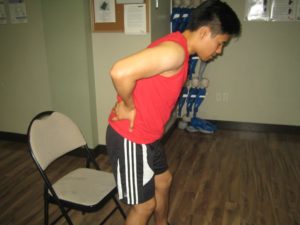The tailbone or the coccyx is the triangle-shaped bony construction found at the base of the vertebral column amidst the buttocks. It has 3-5 bony segments connected by joints and ligaments. Pain in this area is also called coccydynia and can be acute or cause chronic discomfort. Adults and adolescents are more susceptible to this condition and more common in women than men.
Causes of tailbone pain
- Injury to the coccyx that result to a bruise, dislocation or fracture
- A direct blow to the tailbone such as during playing contact sports
- Falling onto the tailbone in the seated position especially against a hard surface
- Injured or damaged during childbirth
Pain in the tailbone can be relieved by walking or standing. - Continuous straining or friction against the tailbone during cycling or rowing
- Less common causes include compression of nerve roots, development of bone spurs, local infections, tumors and pilonidal cysts.
Symptoms
- Pain in the tailbone can be relieved by walking or standing.
- Severe local pain or a deep ache can be felt in the tailbone when touched
- Bowel movements and straining causes pain
- Pain becomes worse especially when sitting for long periods of time on hard surfaces or a direct pressure on the tailbone.
- A bruise can develop due to a traumatic injury
Treatment
- Take the prescribed stool softeners to prevent constipation and lessen the discomfort.
- Use the prescribed injections of anesthetics or corticosteroids into the affected area to lessen the pain and the inflammation and for fast healing of the condition.
- Manipulation of the tailbone is necessary to move the area into its proper position and alignment to lessen the pain.
- Take plenty of rest. Avoid performing strenuous activities for at least 8-12 weeks or take time off from work while the condition is still in the healing process.
- Avoid sitting on hard surfaces for a prolonged time. When sitting on hard surfaces, alternate sitting on each side of the buttocks to lessen the pain and discomfort.
- Apply an ice pack on the affected area for at least 15-20 minutes at a time at 4 times every day for the first 48 hours to lessen the inflammation and the pain.
- Take the prescribed over-the-counter non-steroidal anti-inflammatory drug (NSAID) such as ibuprofen and acetaminophen to lessen the pain and the swelling.
- Maintain good posture to prevent tailbone pain. Sit upright, neck straight and keep the back in a slightly arching position. If there is pain in getting up from a sitting position, lean forward and arch the back before rising to lessen the pain.
- Apply heat in the form of a heating pad on the tailbone area at least for 20 minutes 4 times every day. Another alternative is taking a hot bath if a heating pad is not available.
FACT CHECK
https://www.medicalnewstoday.com/articles/322610.php
https://www.healthline.com/health/back-pain/tailbone-pain
https://www.mayoclinic.org/tailbone-pain/expert-answers/faq-20058211

